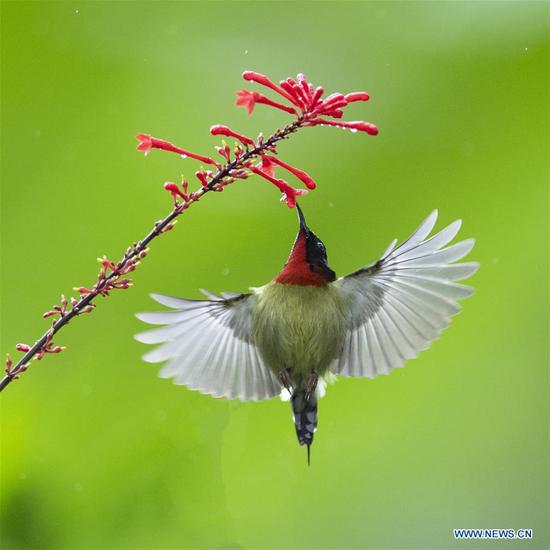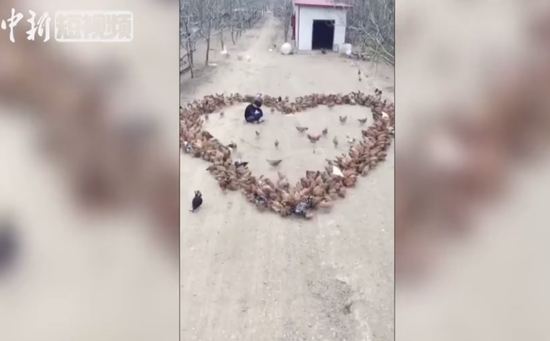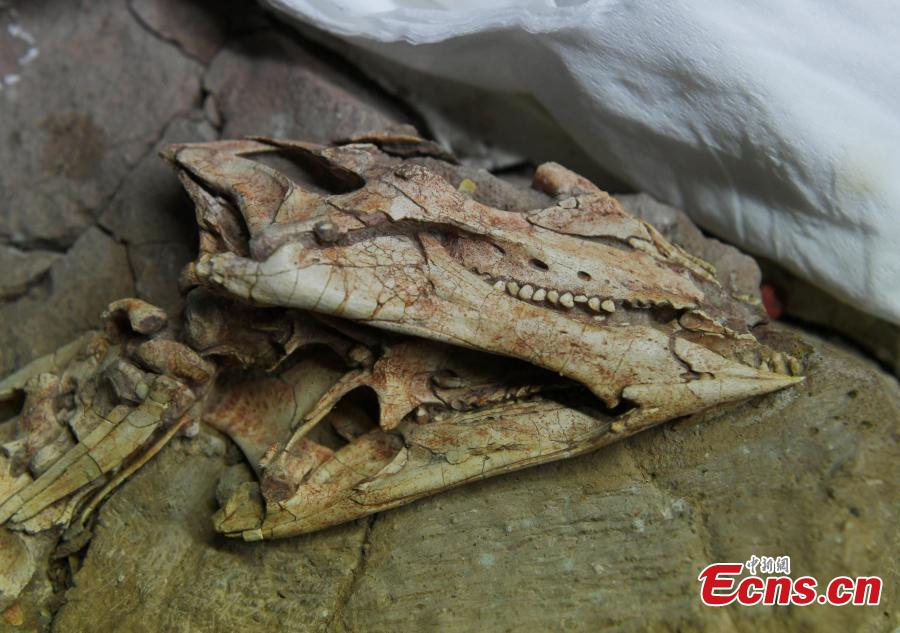
A new study published recently in the journal PLOS ONE describes tooth histology and development of ornithischian dinosaur Changchunsaurus parvus in the mid-Cretaceous period. The research, led by a team of Jilin University, revealed the presence of wavy enamel, which is the phylogenetically earliest occurrence of this type of tissue, according to Chen Jun, director of the team. This is the first time that such a structure has been found after the large duck-billed dinosaurs, and the structure would enhance the teeth and make them more wear-resisting for cutting and chewing plants. (Photo: China News Service/Zhang Yao)
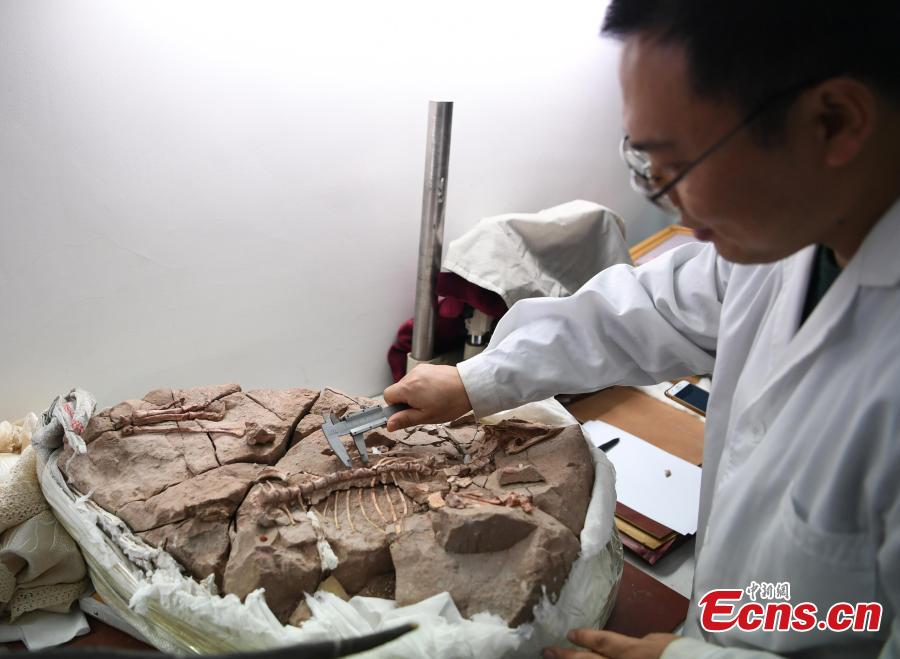
A new study published recently in the journal PLOS ONE describes tooth histology and development of ornithischian dinosaur Changchunsaurus parvus in the mid-Cretaceous period. The research, led by a team of Jilin University, revealed the presence of wavy enamel, which is the phylogenetically earliest occurrence of this type of tissue, according to Chen Jun, director of the team. This is the first time that such a structure has been found after the large duck-billed dinosaurs, and the structure would enhance the teeth and make them more wear-resisting for cutting and chewing plants. (Photo: China News Service/Zhang Yao)
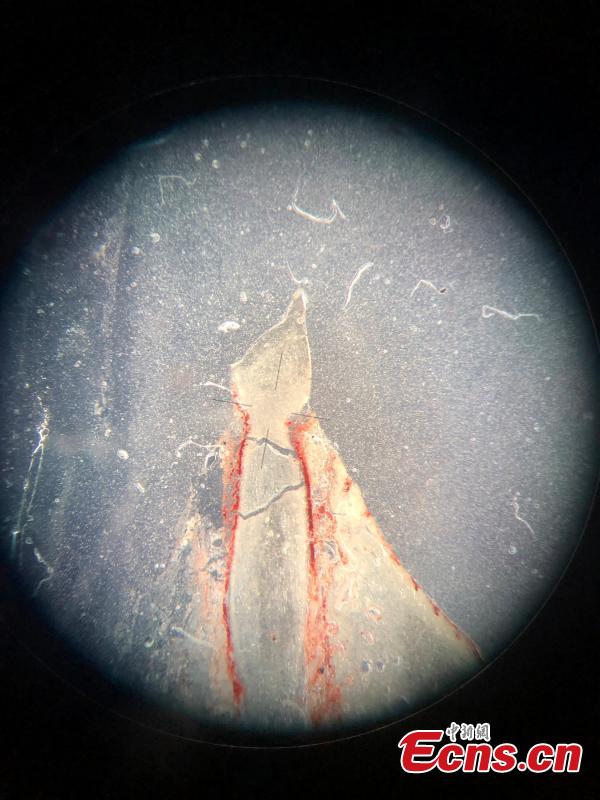
A tooth image of the thin section of Changchunsaurusparvus under a microscope. (Photo: China News Service/Zhang Yao)
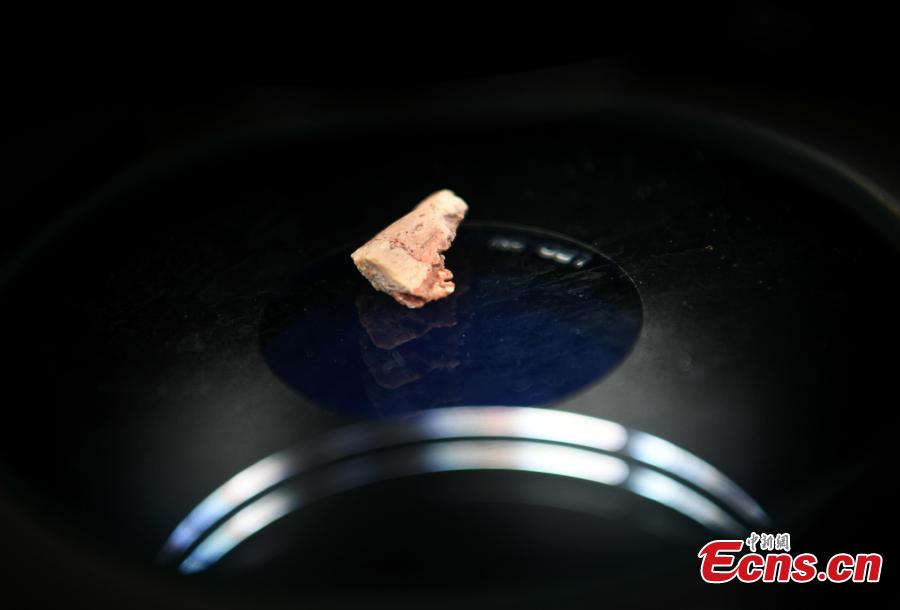
A new study published recently in the journal PLOS ONE describes tooth histology and development of ornithischian dinosaur Changchunsaurus parvus in the mid-Cretaceous period. The research, led by a team of Jilin University, revealed the presence of wavy enamel, which is the phylogenetically earliest occurrence of this type of tissue, according to Chen Jun, director of the team. This is the first time that such a structure has been found after the large duck-billed dinosaurs, and the structure would enhance the teeth and make them more wear-resisting for cutting and chewing plants. (Photo: China News Service/Zhang Yao)
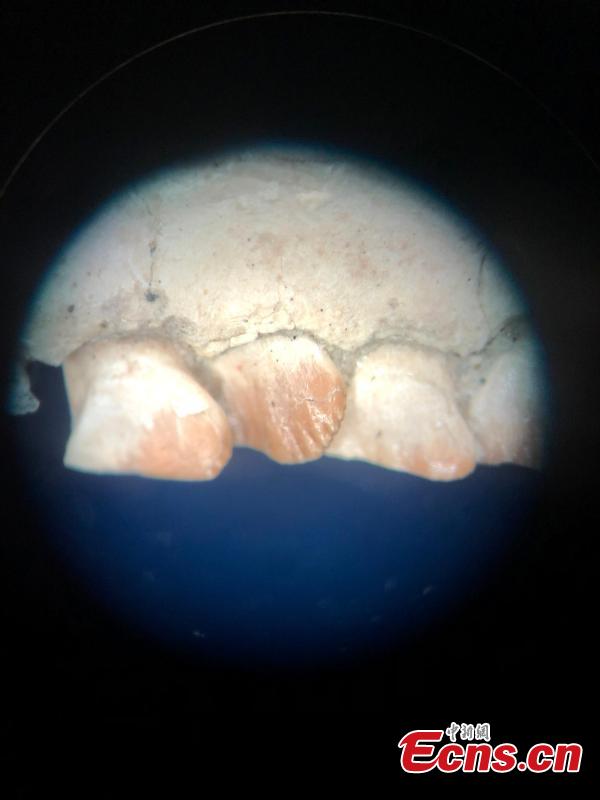
A tooth image of the thin section of Changchunsaurusparvus under a microscope. (Photo: China News Service/Zhang Yao)
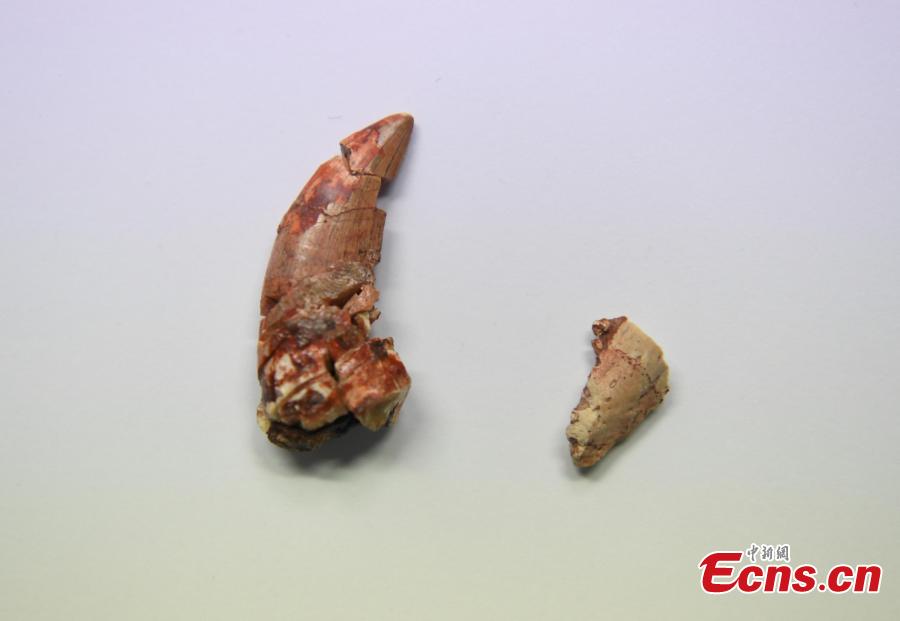
A new study published recently in the journal PLOS ONE describes tooth histology and development of ornithischian dinosaur Changchunsaurus parvus in the mid-Cretaceous period. The research, led by a team of Jilin University, revealed the presence of wavy enamel, which is the phylogenetically earliest occurrence of this type of tissue, according to Chen Jun, director of the team. This is the first time that such a structure has been found after the large duck-billed dinosaurs, and the structure would enhance the teeth and make them more wear-resisting for cutting and chewing plants. (Photo: China News Service/Zhang Yao)














